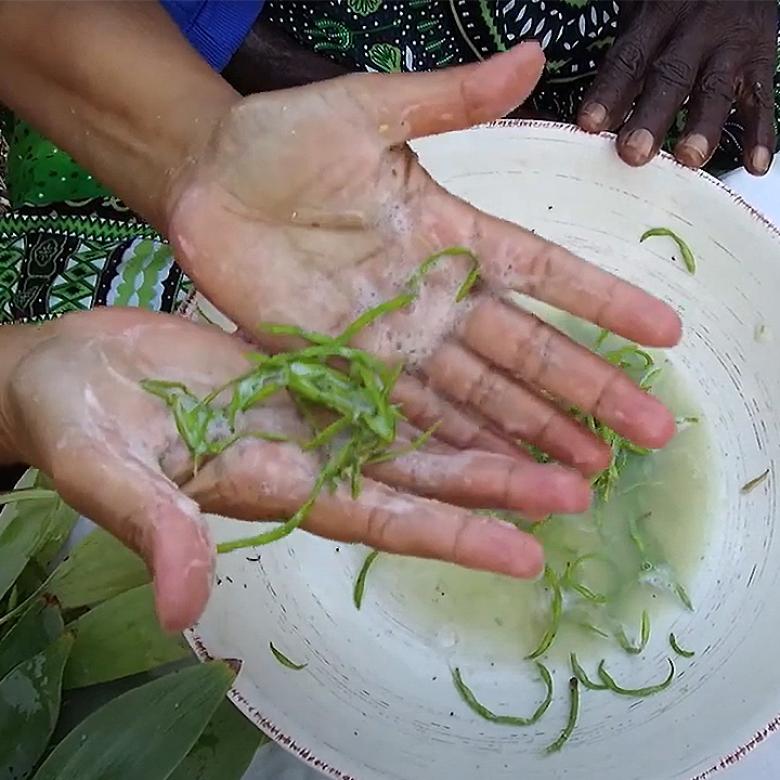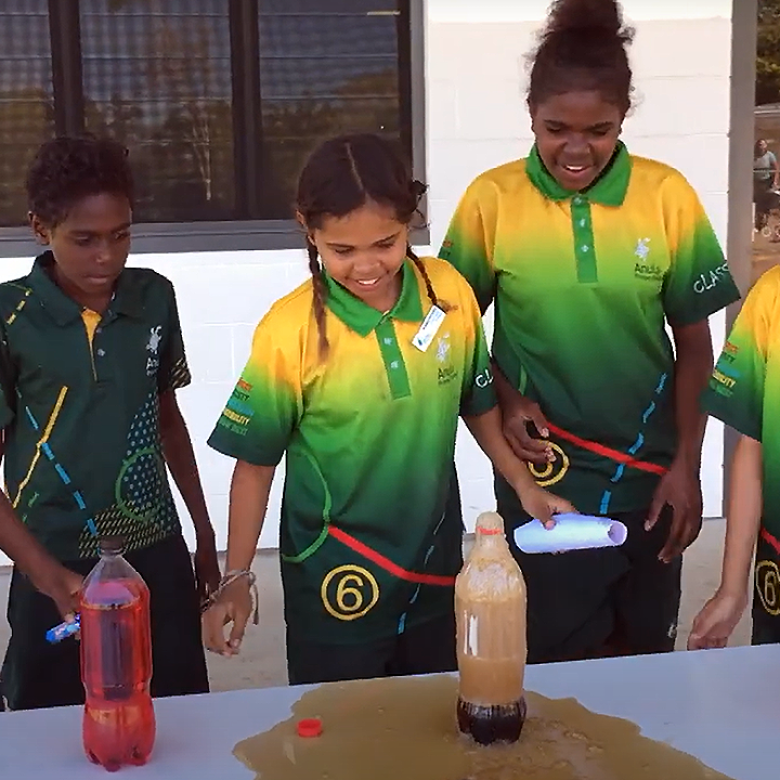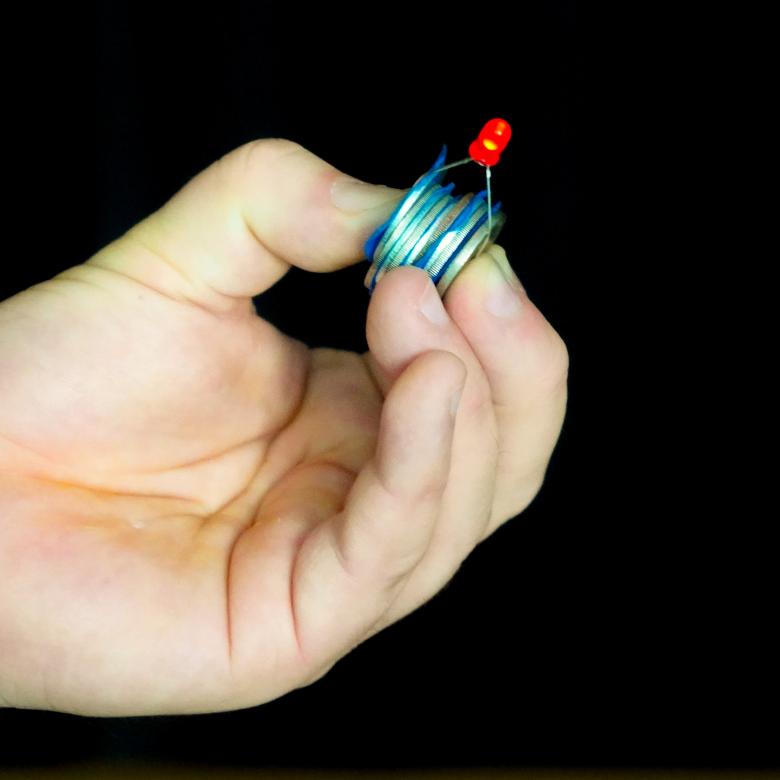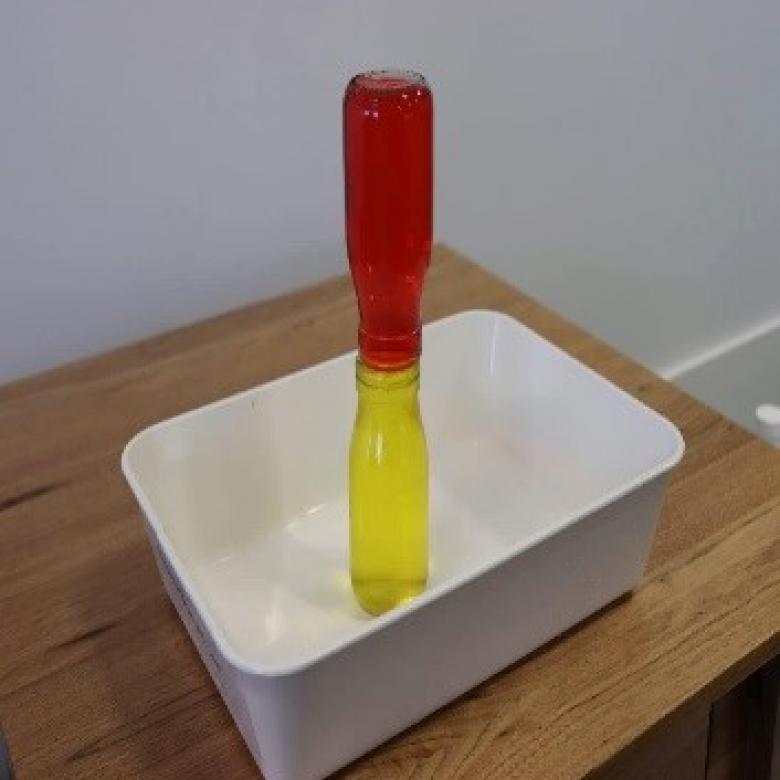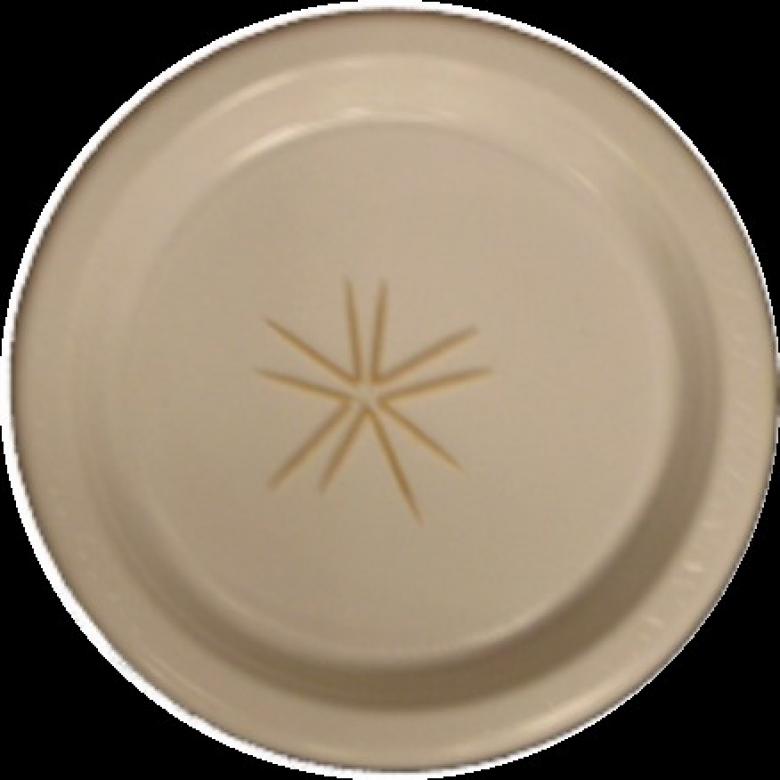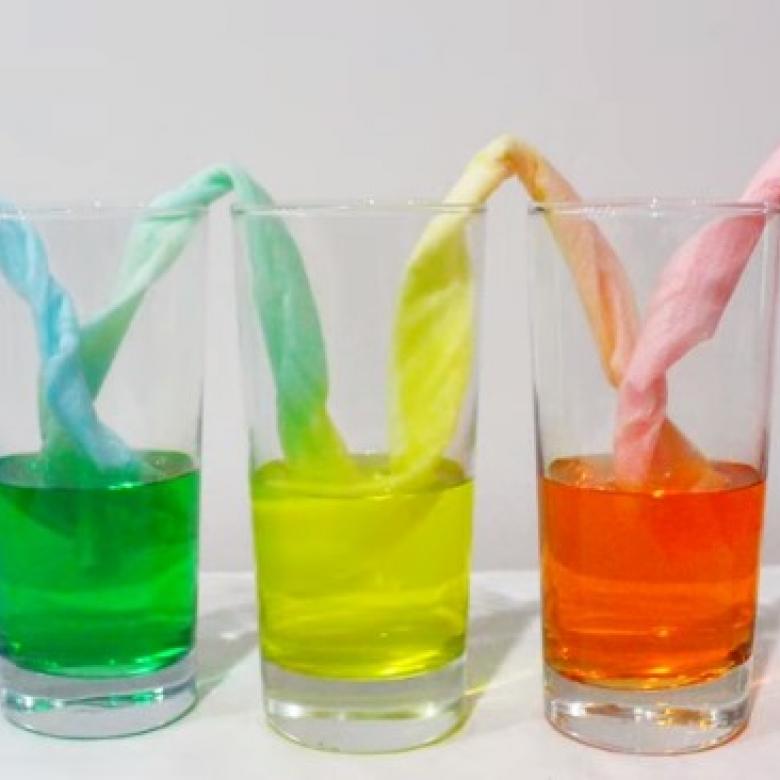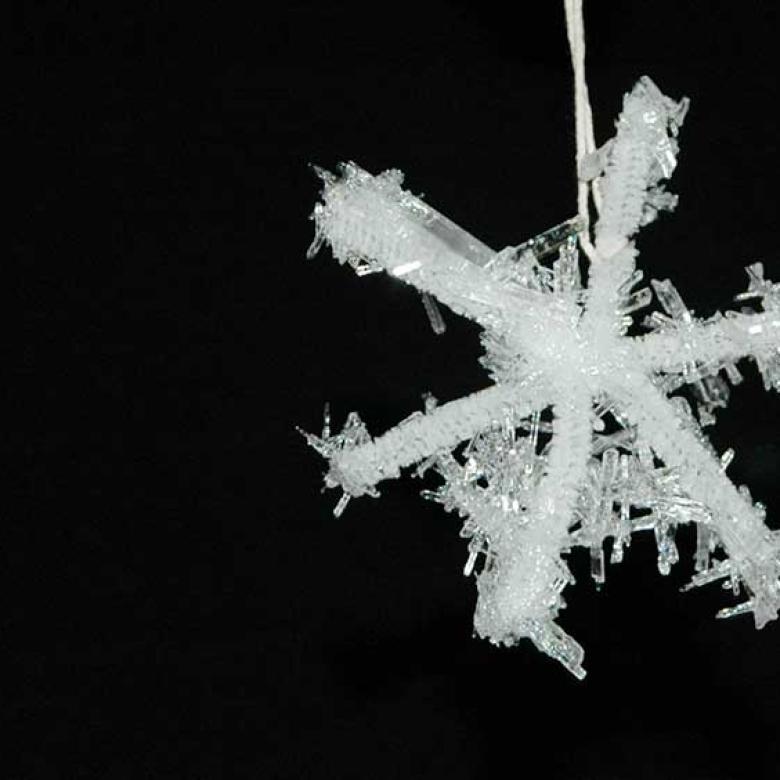You’ll need
- A teaspoon
- Bicarbonate of soda (also called bicarb soda and sodium bicarbonate)
- A plastic cup
- Water
- One or more film canisters (readily ordered online)
- Vinegar
- Space outside
What to do
- Gather your materials on a flat surface.
- Place 1 teaspoon of bicarbonate of soda in the plastic cup. Add a few drops of water and mix to form a thick paste.
- Put some of the paste inside the lid of the film canister. Pack the paste in tightly.
- Pour vinegar into the film canister so it is about one-third full.
- Don’t put the lid on yet! Take the lid and canister outside.
- Now you need to be fast and careful. Hold the canister in one hand away from your body and use your other hand to put the lid on.
- Quickly place the canister upside down on level ground and stand back. Be fast!
Questions to ask
How high does the film canister fly? Try making a bigger rocket with a bigger plastic container.
Where does the energy come from to make the canister move?
Can you do the experiment without vinegar and bicarbonate of soda? Try this activity using a fizzy tablet such as Berocca or Alka-Seltzer. Fill the canister one-half with water then drop one-half of a tablet inside the canister, push the lid down quickly, place the canister on the ground and stand back. Can you make the rocket go even higher? Try it again with a whole tablet or different amounts of water.
What's happening
Mixing bicarbonate of soda and vinegar causes a chemical reaction called an acid–base reaction. The bicarbonate of soda is the base (also called alkaline) and the vinegar is the acid. When acids react with bases, they make water, a salt (not the kind that you put on your hot chips!) and carbon dioxide gas (also written by its chemical formula CO2). The gas expands quickly and puts pressure on the lid of the film canister. The pressure is so strong that eventually the pressure of the gas pushes the lid off the film canister.
As the reaction progresses, more carbon dioxide gas is released. The film canister has a fixed volume. So pressure builds up inside until the lid isn’t strong enough to hold the gas inside the canister. When the canister bursts open, the gas is pushing in all directions – up and down and to the sides. The lid is pushed down onto the ground and the canister is pushed up by the gas, making it fly into the air!
Something similar happens if you use a fizzy tablet. The tablet produces carbon dioxide gas when mixed with water. Again, pressure builds up inside the canister and the canister blows its lid.
Tim: Hello everyone, my name is Tim and I'm from the Questacon Science Squad. I'm going to show you how to make your very own pop rocket today.
(Camera pans to the table).
You need:
- some white vinegar
- a little bit of water
- a cup
- a film canister and
- some bi-carb soda.
So the first step is to take one teaspoon of the bi-carb soda, put it into the cup.
(Tim gets a spoonful of bi-carb soda and puts it into the cup)
And add a few drops of water, just a few drops.
(Tim pours some water in the cup)
And then, once that’s in there, I want you to mix it up until it gets into a thick paste. So there we go. Nice thick paste there.
(Tim mixes the mixture in the cup until it turns into a paste)
Take some of this paste mixture, put it into the lid of the film canister and leave it like that there.
(Tim spoons some of the paste into the lid of the canister)
What you need to do now is take the vinegar and put into your film canister about one third of a film canister worth of vinegar. So pour that in. There we go.
(Tim pours some vinegar into the canister)
And the next bit is pretty messy, so you might want to stand back for this bit. Gonna clear the launch area here.
(Tim moves everything to the side)
What I'm gonna do is put the lid on, turn it upside down and stand back. Here we go.
(Tim puts the lid on the canister then turns it upside down and steps back)
Whoa!
(Camera zooms in on Tim)
If you want to learn how to make your own pop rocket, head to the Questacon Science Squad website. Catch you next time.
Did you know
Space is at the edge of Earth’s atmosphere, which starts at about 100 km above Earth. Astronauts in a space shuttle accelerate from 0 to 28,000 km/h to reach the edge of space in just 8.5 minutes!
By comparison, the cruising altitude of a regular aeroplane is about 10 km. Cruising altitude is how high above Earth planes fly when they aren’t taking off or landing. Aeroplanes reach altitude in about 10 minutes, but this can change depending on the size of the plane.


